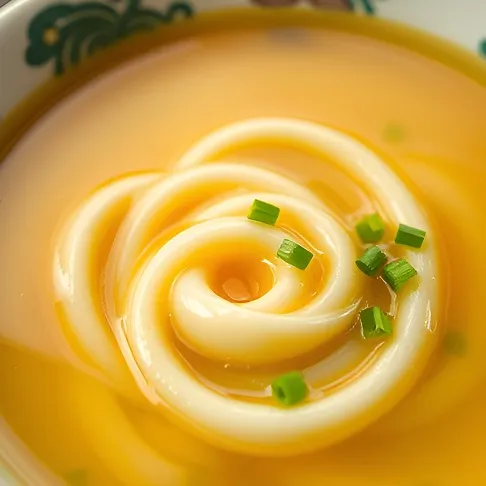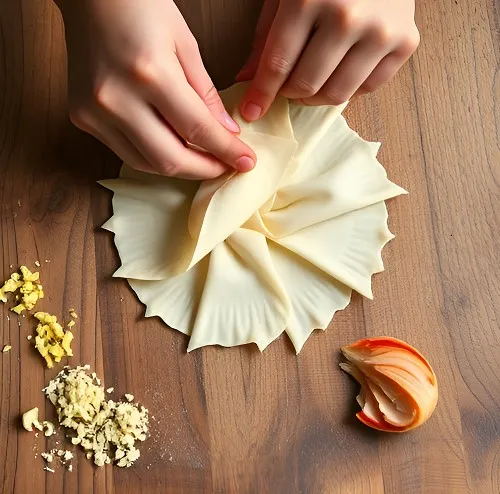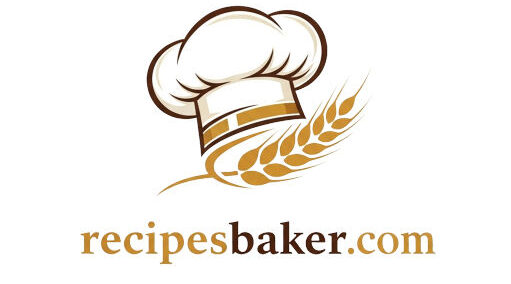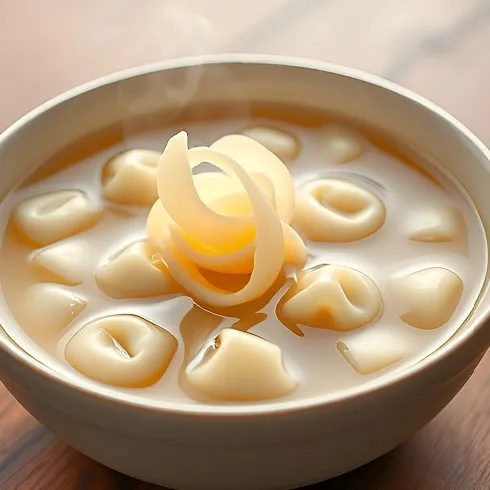There’s something extraordinarily comforting about a steaming bowl of soup, and when you combine the delicate art of an egg drop with the delightful surprise of tender wontons, you get a dish that feels like a warm embrace on a chilly day. In this ultimate guide, we’re diving deep into the world of wonton egg drop soup. We’ll explore its origins, break down its key components, and reveal tips and tricks to help you create a bowl of soup that is as visually appealing as it is flavorful. Whether you’re a curious foodie or a kitchen novice ready to experiment, this article will set you on the path to becoming your very own soup connoisseur.
Table of Contents
What Is Wonton Egg Drop Soup?
At its heart, wonton egg drop soup is exactly what its name implies: a marriage between two classic soup components. The base is a savory broth—often a rich chicken or a lightly flavored vegetable version—that serves as the stage for delicate dumplings, or wontons. To that, thin strands of egg are added, which softly cook in the simmering liquid, creating silky ribbons that float gracefully in your bowl. The result is a satisfying bowl where the soft texture of the egg meets the chewy, flavorful wonton, conjuring both tradition and innovation in every bite.
A Symphony of Flavors and Textures
What sets this dish apart is the interplay of flavors and textures. The broth delivers a complex and layered taste profile, a perfect balance between savory depth and gentle seasonings. The wontons, whether stuffed with pork, shrimp, or vegetables, burst with tastiness as you bite into them, adding a welcome contrast to the smooth, velvety egg ribbons. This balance of soft, chewy, and liquid elements creates a multi-sensory dining experience that leaves you both comforted and delighted.
A Global Comfort Food
One reason wonton egg drop soup has earned its place as a cherished dish is its universal appeal. Across many cultures and continents, the humble soup bowl provides solace during rainy days or moments of culinary experimentation. From upscale restaurants to your favorite neighborhood diner, this soup manages to bridge the gap between traditional recipes and modern twists. Its versatility means that everyone – regardless of culinary expertise – can appreciate its warming and uplifting qualities.
Tracing the Tasty Heritage
The Origins of the Wonton
Long before wonton egg drop soup became a household name, there was the ancient art of creating wontons. These little pockets of dough filled with meat, seafood, or vegetables have roots stretching back to ancient China during the Tang Dynasty. Traditional recipes had these dumplings being boiled, fried, or served in brothy soups, each preparation transforming the simple concept into an art form. Over centuries, regional variations emerged, with different provinces adding their signature touches, ultimately influencing how wontons would later be incorporated into modern soups.
The Birth of Egg Drop Soup
Egg drop soup’s origin is just as fascinating as its wonton counterpart. Historically a means to quickly prepare a nutritional dish, egg drop soup was born out of simplicity. By whisking eggs and slowly combining them with simmering broth, cooks discovered that the eggs would gently form into soft, delicate ribbons rather than scrambled chunks, providing an incredibly elegant texture. As with many classic dishes, what started as a humble banquet staple evolved over time as extra ingredients like a dash of cornstarch or spices became popular.

When Two Worlds Collide
It didn’t take long for creative chefs to merge these two distinct soups into one remarkable dish. The idea likely emerged during the rise of fusion cooking as chefs looked for ways to mix beloved traditions. Imagine someone thinking, “Egg drop soup is amazing on its own, and wonton soup has that satisfying chew—why not combine the two?” This innovative thought process has since spread across the globe, turning wonton egg drop soup into a culinary crossover that appeals to diverse palates.
A Dish That Transcends Borders
The evolution of this soup isn’t confined to its homeland. As Chinese cuisine spread worldwide, wonton egg drop soup was adapted with local ingredients and influences. Chefs everywhere began to tweak the recipe with slight variations—be it richer broths, different fillings, or unique garnishes—making it a true international ambassador of comfort food. Today, it stands as a testament to the power of culinary evolution and global exchange.
Breaking Down the Bowl
The Role of the Broth: The Foundation of Flavor
At the very core of wonton egg drop soup lies its broth. This clear, flavorful liquid is far more than a cooking medium. It’s the soul of the dish and the canvas upon which all other flavors are layered.
Chicken or Vegetable Broth?
Traditionally, a rich chicken broth provides an ideal flavor base, enveloping the wontons and egg with a deep, savory essence. However, for those seeking a lighter or vegetarian option, a high-quality vegetable broth works wonders as well. The choice of broth dramatically influences the overall taste, so invest in a well-seasoned stock or even consider making your own to infuse personal touches into the dish.
Elevating the Broth
To transform an ordinary broth into something extraordinary, consider adding aromatics such as minced ginger and garlic. A subtle splash of soy sauce can deepen the umami notes, while a few drops of sesame oil impart a delicate nutty aroma. Sometimes, even a pinch of white pepper enhances the broth’s warmth without overwhelming its balance. These small additions can elevate your soup from a simple dish to an unforgettable culinary experience.
Crafting the Perfect Wonton: From Filling to Wrapping
The wonton is not merely an ingredient; it is a work of art, where texture meets flavor head-on.
Creative Wonton Fillings
While pork and shrimp remain the most popular fillings for wontons, the landscape of flavors is vast and inviting. Many home cooks experiment with chicken, fish, or even a blend of mushrooms and tofu. The secret lies in crafting a filling that is well-seasoned with ginger, garlic, and a medley of sauces, ensuring that every bite bursts with flavor.
Homemade vs. Store-Bought Wrappers
You have two paths: a quick solution using store-bought wrappers or the more refined route of making your own. Creating your own wonton wrappers – a mixture of flour, water, and a pinch of salt – allows you to tailor the texture and thickness to your liking. Rolling out the dough as thin as possible and cutting it into perfect squares can be a satisfying culinary exercise, adding a personal touch to every dumpling.
Folding Techniques: Art in Every Fold
The beauty of wontons lies in the multitude of ways in which they can be folded. Whether you choose a simple purse fold, a triangle, or a tortellini-style wrap, the key is to ensure that the edges are tightly sealed. A well-folded wonton not only holds the filling securely but also ensures even cooking. Remember, it’s the careful details that make your wontons the ideal counterpart to the soft egg drop.
The Magic of the Egg Drop: Creating Silky Ribbons
One of the most mesmerizing parts of this dish is the egg drop. As the delicate egg gently cooks into the simmering broth, it forms long, silky ribbons that float like threads of gold.

Achieving the Perfect Egg Ribbons
The trick to forming graceful egg ribbons is all in the technique. A thorough, vigorous whisk ensures a uniformly smooth mixture. Once your broth is at a gentle simmer (not a full boil), slowly drizzle the eggs in a thin stream while stirring continuously. This deliberate method allows the heat to gradually set the egg into beautiful strands rather than clumping into scrambled bits.
Experimenting with Different Egg Choices
While eggs from a chicken are typically used, some enthusiasts enjoy experimenting with duck eggs. These can offer a richer flavor and a slightly denser texture, giving your soup a new, intriguing twist. Whichever egg you choose, the goal remains the same: delicate ribbons that enhance the overall experience of the soup.
Finishing Touches: The Final Flavor Boosters
Adding a final flourish of flavor can transform your soup from merely delicious to downright irresistible.
Soy Sauce and Sesame Oil
A dash of soy sauce is almost a ritual in many Asian-inspired soups. It introduces an additional layer of savory depth that perfectly complements the broth. Similarly, a light drizzle of sesame oil right before serving releases a captivating aroma and subtle nutty taste, enhancing the overall sensory experience without overpowering any notes.
Step-by-Step Guide to Making Wonton Egg Drop Soup
Choosing Your Wontons: Homemade or Store-Bought?
The journey to a perfect bowl begins with your wontons. If you have a few extra minutes and relish a hands-on approach, making wontons from scratch can be a rewarding experience. This way, you control every element—from the mixture of ingredients to the precise fold of each dumpling. However, if you’re pressed for time or simply wish to streamline your process, many grocery stores offer high-quality, ready-to-cook wontons. Regardless of your choice, the goal remains the same: ensure the dumplings are fresh and bursting with flavor.
Building a Broth Bursting with Flavor
Start by heating your chosen broth in a large pot—chicken for a heartier base or vegetable for a lighter yet aromatic variant. To this, add your flavor boosters: a couple of cloves of minced garlic, slices of fresh ginger, and perhaps a subtle splash of soy sauce. Bring the liquid to a gentle simmer, ensuring it’s hot but not boiling vigorously. If you prefer a clear broth, consider straining out the aromatics after a brief simmer. This step not only cleans up the texture but also focuses the flavor on the essence of your stock.
Mastering the Egg Drop Technique
Now comes the highlight that gives the soup its signature appearance. In a small bowl, break and whisk your eggs until the mixture is completely smooth. When your broth is ready, maintain a consistent, gentle simmer and slowly pour the beaten eggs into the liquid. Stir in one direction as you drizzle, allowing the eggs to cook in thin, graceful ribbons. The slow incorporation is crucial—rushing this step can lead to scrambled, uneven egg pieces rather than the refined texture you’re aiming for. This step is akin to painting: every stroke matters, and the layers you build form the final picture of your creation.
Assembling the Final Bowl
If you’re using store-bought wontons, add them according to the package instructions, usually after the broth has reached the proper simmer. For homemade wontons, carefully introduce them into the pot one by one, making sure not to crowd the broth. Allow them to cook until they float to the surface, which typically takes between three to five minutes. As you near the final moments of cooking, gently check to ensure that both the wontons are tender and the egg ribbons have maintained their silky allure. The result is a bowl of soup where every component has been given the time and care needed to shine.
Nailing the Perfect Temperature
One of the finer details in this process is maintaining the right temperature throughout. A roaring boil can break apart the delicate wontons and lead to a tough egg texture. Aim for a gentle simmer—a state where the edges of the broth form barely noticeable bubbles that hint at the heat within. This balance of heat ensures that your wontons and egg maintain their structural integrity, allowing them to blend perfectly with the rich broth.
Global Variations and Creative Twists
Regional Inspirations and Personal Innovations
Wonton egg drop soup is a dish that has traveled far beyond its original geographical roots, evolving with every new set of hands that prepared it. In some regions, cook alterations include different types of meat—like tender chunks of chicken or even delicate slices of fish—altering the dynamic between the filling and the broth. In other adaptations, chefs might integrate seasonal vegetables like bok choy or mushrooms, adding color and a fresh twist to the dish.
A Spicy Spin for the Adventurous
For those with a penchant for spice, consider introducing a little heat. A few drops of chili oil, a pinch of red pepper flakes, or even a spoonful of Sriracha can revamp the classic flavor profile, creating an exciting version of the soup that awakens your palate with a fiery kick. This version still upholds the silky egg ribbons and tender wontons, but introduces a new dimension of flavor that can refresh an old favorite.
Catering to Vegetarians and Vegans
The beauty of wonton egg drop soup lies in its adaptability. Vegetarians and vegans are not left out of the culinary adventure—simply swap the chicken broth for a robust vegetable stock. For the dumplings, experiment with fillings that feature tofu, mushrooms, and a variety of finely chopped, seasoned vegetables. To replicate the egg drop, silken tofu can be pureed and drizzled into the broth to mimic the smooth texture of traditional egg ribbons without relying on animal products. This compassionate twist preserves the soul of the dish while accommodating different dietary lifestyles.
Insider Tips for the Ultimate Soup Experience
Striving for a Crystal-Clear Broth
A clear broth isn’t just visually appealing—it also speaks to the attention-to-detail in your cooking process. A few practical tips include starting with a high-quality stock and, if making your own, skimming off the foam that forms early on. For those using pre-made broths, a quick pass through a fine-mesh sieve can eliminate any stray particles, leaving your soup looking pristine and inviting.
Avoiding Soggy Wontons
Few things are more disappointing than dumplings that almost disintegrate in your soup. The trick is timing: once the wontons reach the surface, give them just enough time to cook through, usually no more than a few minutes. If you plan to serve your soup later, consider cooking the wontons separately and adding them back in right before serving to maintain their firmness and texture.
Perfecting the Egg Ribbons
Remember the delicate art of drizzling your whisked eggs slowly into the simmering broth? This step is critical. It may take a few tries to perfect the timing, so don’t be discouraged if your first few attempts look more like scrambled bits than the ideal silky threads. Patience and a steady hand are all it takes to transform your egg drop from an easy mistake into a visual and culinary masterpiece.
Complementary Sides and Serving Suggestions
Side Dishes to Complete Your Meal
While a bowl of wonton egg drop soup can serve as a meal in itself, pairing it with complementary sides can make for an even more satisfying dining experience. Many enjoy serving small portions of crispy spring rolls or egg rolls alongside their soup. A bowl of steamed jasmine rice or sticky rice provides the perfect canvas to soak up every drop of the flavorful broth. Alternatively, a vibrant stir-fry of seasonal vegetables not only adds color to your table but also reinforces the layered textures and flavors found in the soup.
Embracing the Journey: Final Thoughts
Wonton egg drop soup offers an extraordinary peek into culinary artistry where tradition meets innovation. Every element—from the thoughtfully prepared broth and lovingly folded wontons to the artful drizzle of beaten egg—contributes to a dish that satisfies both the belly and the soul. Preparing this soup is more than just following a recipe; it is a journey into the intricacies of flavor, technique, and creativity. Each time you make it, you have the opportunity to adjust, experiment, and make the dish your very own.

Whether you stick closely to tradition or dare to integrate new ingredients and modern twists, one thing is certain: this bowl of soup is destined to become a cherished part of your culinary repertoire. Its inherent balance of taste and texture, its deep historical roots, and its adaptability make it a dish that transcends borders and seasons.
In Conclusion
Wonton egg drop soup is more than a tasty bowl of soup—it’s a celebration of heritage, innovation, and the universal love of a comforting meal. This guide sought to break down every essential component, offer detailed insights into each step of the process, and inspire you to try new variations. Whether you’re drawn to the traditional recipe or you’re ready to experiment with modern twists, the secret to success lies in patience, passion, and a willingness to let your creativity flourish in every stir and every fold.
Now that you have the know-how, it’s time to step into your kitchen and create your masterpiece. Enjoy the art of soup-making, and remember that each bowl you serve is a reflection of both time-honored traditions and your unique culinary signature.
Happy cooking and bon appétit!

